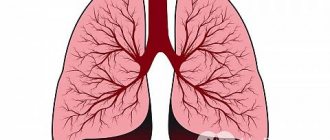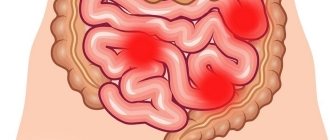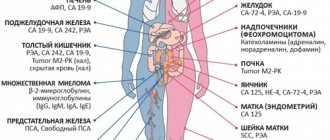probiotics
prebiotics
metaprebiotics
As interest in natural treatments grows, so does the popularity of probiotics. In 2012, nearly 4 million American adults took probiotics or prebiotics, a fourfold increase from 2007. Probiotics were used in more than 50,000 hospitalizations at 139 U.S. hospitals in 2012. Last year alone, American consumers spent, an estimated $2.4 billion in nutritional supplements .
However, two studies have recently been published in which scientists from Israel question whether such widespread use of probiotics to improve overall well-being and restore intestinal microflora after antibiotic use is really advisable .
The first study showed that bacteria from probiotic microorganisms contained in a dietary supplement are not able to colonize the proper parts of the intestine , and, presumably, they can bypass the gastrointestinal tract without any effect on it. In another study, the same bacteria settled in the intestines after a course of antibiotics, but there was a delay in the restoration of its own microbiota . Both studies, conducted on healthy volunteers, were published in the journal Cell in October 2022.
The term "probiotics" means "live microorganisms that, when administered in an adequate dose, contribute to a health benefit to the host." However, some experts say any evidence of benefit, limited to a small number of indications, is controversial and often of poor quality. A 2022 Cochrane analysis found that data from 10 of 14 systematic reviews of clinical trials were insufficient to determine whether probiotics improve gastrointestinal health .
It would seem that things should be better in patients with diarrhea. Although many studies suggest that probiotic supplementation may prevent or treat antibiotic-associated diarrhea and Clostridium difficile infection, other studies (both children and adults) have shown no benefit for these conditions. The two most recent studies, published late last year in the New England Journal of Medicine, did not show the effectiveness of Lactobacillus rhamnosus probiotics in children with gastroenteritis or stomach flu.
Among scientists and practitioners using bacterial therapies, such uncertainty has "caused a great deal of confusion," says Eran Elinav, MD, PhD, a professor at the Wetzmann Institute in Rehovot, Israel, and lead author of the new study published in Cell. .
Gastrointestinal diseases
Microorganisms in the human intestine take up a lot of space. But in terms of mass, they weigh approximately 2-3 kg for an adult. A person of such weight not only has to be given water and food, but often also treated.
Artificial support is also often required for the intestines under conditions of stress, poor nutrition, and a sedentary lifestyle. And so-called probiotics and prebiotics are suitable for this case.
What are probiotics and prebiotics
Probiotics are beneficial substances for the human intestines.
Probiotics contain microorganisms specifically from among the beneficial inhabitants of the human intestine (these are symbiotic bacteria).
This drug also contains waste products of these types of bacteria. Drinking probiotics means populating your intestines with the “right tenants.”
Prebiotics do not contain microorganisms, but they are able to create optimal conditions for their development in the intestines. Often, these drugs consist of acids, enzymes, and oligosaccharides. It is these substances that microorganisms are accustomed to using as food, and prebiotics thus feed them and stimulate their development and growth.
Intestinal dysbiosis and antibiotic-associated diarrhea, diagnosis and treatment
The study of intestinal microflora began in 1886, when F. Escherich described Escherichia coli (Bacterium coli communae). In 1908, Nobel laureate Russian scientist Ilya Ilyich Mechnikov proved the necessity of intestinal bacteria for health and longevity. To date, the presence of 500 types of microbes has been established in the intestines of a healthy person. Normal microbial flora is one of the barriers to bacteria entering the intestines. It stimulates immune defense and increases the secretion of IgA into the intestinal lumen. Escherichia coli, enterococci, bifidobacteria, acidophilus bacilli have antagonistic properties and are able to suppress the growth of pathogenic microorganisms. Violation of the microflora composition leads to a decrease in the body's resistance to intestinal infections.
There are mucoid microflora (M-microflora) - microorganisms associated with the intestinal mucosa, and cavity microflora (P-microflora) - microorganisms localized in the intestinal lumen.
In relation to the macroorganism, representatives of the intestinal biocenosis are divided into 4 groups:
- obligate microflora (main intestinal microflora - bifidobacteria, lactobacilli, normal E. coli, propionobacteria, peptostreptococci, enterococci);
- facultative (opportunistic and saprophytic microorganisms - bacteroides, staphylococci, streptococci, peptococci, yeast-like fungi, veyonella, fusobacteria, bacilli);
- transient (occasional microorganisms that are not capable of long-term residence in the body - flavobacteria, pseudomonads);
- pathogenic (pathogens of infectious diseases - Shigella, Salmonella, Yersinia, etc.).
When microbes utilize indigestible carbohydrates (fiber), short-chain fatty acids are formed. They provide intestinal cells with energy carriers, improving the trophism of the mucous membrane. Insufficient fiber in the diet leads to decreased synthesis of short-chain fatty acids. As a result, dystrophic changes in the epithelium occur and the permeability of the intestinal barrier to antigens of food and microbial origin increases.
Under the influence of microbial enzymes in the ileum, bile acids (BAs) are deconjugated and primary FAs are converted into secondary FAs. Under physiological conditions, 80–95% of FAs are reabsorbed, the rest are excreted in the feces in the form of metabolites. The latter promote the formation of feces, inhibit the absorption of water, preventing excessive dehydration of feces. Excessive bacterial contamination of the small intestine leads to premature deconjugation of fatty acids and secretory diarrhea.
Thus, the morphological and functional state of the intestine depends on the composition of its microflora.
In the jejunum of healthy people there are up to 100,000 bacteria per 1 ml of contents. The main part of them are streptococci, staphylococci, and lactic acid bacilli. In the distal ileum, the number of microbes increases due to enterococci, Escherichia coli, bacteroides and anaerobic bacteria.
The microbial composition of feces does not reflect the complete picture of the intestinal biocenosis and does not provide operational information about the composition of microorganisms in the intestine. In practice, data on only 15–20 types of microbes contained in feces are taken into account. Usually the number of bifidobacteria, lactobacilli, enterobacteria, E. coli, Proteus, Enterococcus, Staphylococcus aureus, Pseudomonas aeruginosa and Candida are examined.
Intestinal dysbiosis is a violation of the ecological balance of microorganisms, characterized by a change in the quantitative ratio and qualitative composition of indigenous microflora in the microbiocenosis. The term “dysbacteriosis” was first introduced by A. Nissle in 1916.
The severity of dysbiosis is determined by the degree of decrease in bifidobacteria and other obligate microorganisms and an increase in the number of opportunistic and pathogenic species.
I degree - a decrease in the number of obligate representatives (bifidobacteria and/or lactobacilli) by 1–2 orders of magnitude, without an increase in opportunistic microflora (OPM), an increase in the number of OPM with a normal number of bifidobacteria. II degree - moderate or significant decrease in the number of bifidobacteria, combined with pronounced changes in aerobic microflora (reduction of lactobacilli, appearance of altered forms of Escherichia coli, UPM in high quantities). III degree - a large number of UPM, both of one type and in associations, isolation of pathogenic microorganisms (Mekhtiev S.N., Grinevich V.B., Zakharenko S.M.).
In the clinic of dysbiosis, the following key syndromes are distinguished:
- dyspeptic (decreased appetite, regurgitation, belching, nausea, vomiting);
- intestinal syndrome (bloating, rumbling intestines, tendency to constipation or loose stools with undigested food debris);
- secondary malabsorption syndrome (persistent diarrhea with impaired absorption of monosaccharides and electrolytes),
- polyhypovitaminosis (dry skin, hair loss, brittle nails, cheilitis, stomatitis).
New approaches to the diagnosis of dysbiosis
An alternative to routine bacteriological studies is chemical methods for differentiating microorganisms and, in particular, gas chromatography (GC) combined with mass spectrometry (GC-MS). The method is based on identifying the components of bacterial cells that appear as a result of their natural death or attack by the immune system. Minor lipid components of microbial membranes are used as markers. Based on their content, up to 170 species of bacteria and fungi in various biological environments can be determined within a few hours.
Almost 50% of the biomass of the wall microflora are actinomycetes, which occupy an intermediate position between bacteria and fungi. About 25% of the microbial flora is represented by aerobic cocci (staphylococci, streptococci, enterococci and coryneform bacteria). The number of bifido- and lactobacilli ranges from 20 to 30%. Other anaerobes (peptostreptococci, bacteroides, clostridia, propionobacteria) make up about 10% in the small intestine and up to 20% in the large intestine. Enterobacteriaceae account for 1% of the total number of microflora of the mucous membrane.
Up to 90–95% of colon microbes are anaerobes (bifidobacteria and bacteroides) and only 5–10% of all bacteria are strict aerobic and facultative flora (lactic acid and E. coli, enterococci, staphylococci, fungi, proteus).
Dysbiosis is not an independent disease. Its appearance is facilitated by disorders of intestinal digestion, motility, local immunity, antibiotics, antacids and other medications. It is necessary to establish the cause that caused dysbiosis, and not try to “cure” the intestinal microflora based on its bacteriological analysis of stool.
The properties of microbes inhabiting the intestines are not always taken into account when prescribing antibiotics. Antibacterial drugs suppress the growth of not only pathogenic microorganisms, but also normal microflora. As a result, saprophytic microbes with high resistance to drugs multiply and acquire pathogenic properties.
Antibiotic-associated diarrhea
Patients receiving antibiotic therapy may develop diarrhea caused by intestinal dysbiosis (AAD - antibiotic-associated diarrhea). The frequency of such diarrhea ranges from 5–25%. The reason for this is a decrease in the number of microbes sensitive to the antibiotic and the emergence of resistant strains that are not normally present. The most well-known representative of such microorganisms is the pathogenic strain Clostridium difficile (Cl. difficile), but the cause of diarrhea associated with antibiotics can also be other microbes that can enhance the secretion of ions and water and damage the intestinal wall. These are staphylococci, Proteus, yeast fungi, enterococci, Pseudomonas aeruginosa, Klebsiella. Based on the type of diarrhea, AAD is usually classified as secretory and inflammatory types.
Antibiotic-associated diarrhea is most often caused by lincomycin, ampicillin, clindamycin, benzylpenicillin, cephalosporins, tetracyclines, and erythromycin. The method of administration of the antibiotic does not matter much. When taken orally, in addition to the eradication of microorganisms, the antibiotic affects the mucous membrane of the small intestine. When administered parenterally, antibiotics affect the intestinal biocenosis, excreted with saliva, bile, and secretions of the small and large intestines.
Symptoms of AAD in most patients usually appear during treatment, and in 30% - within 7-10 days after its cessation.
Most researchers consider clostridia, in particular Cl., to be the etiological factor of AAD. difficile. Among the adult population, the level of its carriage is low and equal to 2–3%. Reproduction conditions for Cl. difficile are an anaerobic environment and suppression of normal intestinal microflora.
Clinical manifestations of AAD range from mild diarrhea to severe pseudomembranous colitis (PMC). MVP is an acute intestinal disease that is a complication of antibacterial therapy. It has been established that it is caused by Cl. difficile.
Symptoms
The main symptom of AAD is profuse, watery diarrhea, the onset of which is preceded by the administration of antibiotics for several days or more. Then cramping pain in the abdomen appears, subsiding after stool. In cases where fever occurs, leukocytosis increases in the blood, and leukocytes appear in the stool, PMH should be suspected.
After discontinuation of the antibiotic, in some patients the symptoms quickly disappear. With MVP, despite the cessation of antibiotic therapy, in most cases the frequency of stool increases, dehydration and hypoproteinemia appear. In severe cases, dehydration quickly sets in, toxic dilatation and perforation of the colon develop, and death is possible.
Diagnosis
The diagnosis of AAD is made based on the association of diarrhea with the use of antibiotics. The diagnosis of MVP is confirmed by bacteriological examination of stool and determination of the Cl toxin in it. difficile. The frequency of detection of the toxin in the stool of patients with AAD does not exceed 15%.
In patients with diarrhea associated with Cl. difficile, significant leukocytosis is observed. There is evidence that patients with leukocytosis of 15800 and above are highly likely to develop MVP caused by Cl. difficile. This is explained by the fact that toxin A, secreted by Cl. difficile causes inflammation, fluid secretion, fever and convulsions. Therefore, in all patients with AAD, occurring with intoxication and leukocytosis, 15800 and above should be considered the cause of diarrhea Cl. difficile.
Parfenov A.I., Osipov G.A., Bogomolov P.O used the GC-MS method to assess the composition of the microbial flora of the small intestine in 30 patients with AAD and found that diarrhea can be associated not only with an infectious agent (Cl. difficile) , but with a significant change in the normal microflora towards an increase in the number of 7 to 30 out of 50 controlled microorganisms. In this case, the total colonization of the small intestine increases 2–5 times compared to the norm.
In patients with AAD, most often there are no morphological changes in the colon. In severe cases, endoscopy reveals 3 types of changes: 1) catarrhal inflammation (swelling and hyperemia) of the mucous membrane; 2) erosive-hemorrhagic lesion; 3) pseudomembranous lesion.
The endoscopic picture of MVP is characterized by the presence of plaque-like, ribbon-like and solid “membranes”, soft but tightly fused to the mucous membrane. The changes are most pronounced in the distal parts of the colon and rectum. The mucous membrane is edematous, but not ulcerated. Histological examination revealed subepithelial edema with round cell infiltration of the lamina propria, capillary stasis with the release of red blood cells outside the vessels. At the stage of formation of pseudomembranes, infiltrates are formed under the surface epithelium of the mucous membrane. The epithelial layer is raised and absent in places: the bare areas of the mucous membrane are covered only by desquamated epithelium. In later stages of the disease, these areas may occupy large segments of the intestine.
Differential diagnosis
The association of diarrhea with antibiotic therapy usually does not create difficulties in diagnosing AAD. In severe cases, the picture of MVP may resemble cholera or a fulminant form of ulcerative colitis, Crohn's disease. However, the latter are characterized by more or less pronounced bloody diarrhea, which is not typical for MVP. Nevertheless, the possibility of developing erosive-hemorrhagic changes in the mucous membrane during AAD does not exclude the appearance of bloody discharge from the rectum in some patients.
Treatment of AAD
Etiotropic therapy of AAD and MVP caused by Cl. difficile, most authors consider the prescription of vancomycin and metronidazole (Trichopol, Metrogyl).
Immediately discontinue the antibiotic that caused the diarrhea. Vancomycin is prescribed at an initial dose of 125 mg orally 4 times a day, if necessary, the dose is increased to 500 mg 4 times a day. Treatment is continued for 7–10 days. Metronidazole is given 0.5 g orally 2 times a day (or 0.25 g 4 times a day).
Bacitracin is also used at a dose of 25 thousand IU orally 4 times a day. Treatment is carried out for 7–10 days. Bacitracin is almost not absorbed, resulting in a high concentration of the drug in the colon. For dehydration, infusion therapy and oral rehydration (Regidron, Citroglucosolan) are used. Cholestyramine is prescribed to bind toxin A.
There are reports of the possibility of treating AAD also with large doses of probiotics. S. Perskyp and L. Brandt (2000) found that normal human microflora is able to eliminate diarrhea caused by Cl. difficile. The bactericidal effect of normal microflora ensures recovery in more than 95% of patients with AAD associated with Cl. difficile. It prevents the appearance of chronic clostridial and other infections, which can cause chronic gastrointestinal disorders in some patients. Probiotic therapy for AAD and MVP should be started as early as possible, without waiting for confirmation of the diagnosis.
Since the number of microbes that provide a therapeutic effect is several orders of magnitude higher than the doses of conventional bacterial preparations, the issue of local delivery of probiotics to the intestines is being discussed. This can be done using saline enemas, a nasoduodenal tube, or a colonoscope. The latter method attracts attention because it involves introducing probiotics directly into the proximal colon.
One of the main probiotic drugs used to treat AAD is Linex. This is a combined drug containing components of natural microflora from different parts of the intestine. Containing bifidobacteria, lactobacilli and non-toxigenic lactic acid enterococcus maintain the balance of intestinal microflora and ensure its physiological functions: create unfavorable conditions for the reproduction and activity of pathogenic microorganisms; participate in the synthesis of vitamins B1, B2, PP, folic acid, vitamins K and E, ascorbic acid, provide the body with vitamins B6, B12 and biotin; by producing lactic acid and reducing the pH of the intestinal contents, they create favorable conditions for the absorption of iron, calcium, and vitamin D. Lactic acid bacteria carry out the enzymatic breakdown of proteins, fats and complex carbohydrates; carbohydrates and proteins that are not absorbed in the small intestine undergo deeper breakdown in the large intestine by anaerobes ( including bifidobacteria). The bacteria that make up the drug are involved in the metabolism of bile acids.
Linex contains lactic acid bacteria that are resistant to antibiotics. Adults and children over 12 years of age are prescribed 2 capsules 3 times a day after meals with a small amount of liquid. The duration of treatment is on average 1–2 months. When using the drug in recommended doses, no side effects were noted. Contraindications: hypersensitivity to the components of the drug or dairy products. Studies have not revealed that Linex has a teratogenic effect, and no negative effects of the drug have been reported during pregnancy and lactation. To preserve the viability of the components of the drug, it is not recommended to drink Linex with hot drinks; you should refrain from drinking alcohol.
The clinical manifestations of an allergy to lactic acid bacteria are similar to those of an allergy to dairy products, therefore, if allergy symptoms appear, the drug should be stopped to determine its causes. There have been no reported cases of Linex overdose. There were no undesirable interactions with other drugs. The composition of Linex allows it to be taken simultaneously with antibacterial agents.
For the symptomatic treatment of diarrhea, the following are also used: attapulgite adsorbent, 1.2–1.5 g after each loose stool; loperamide, 2–4 mg orally after each bowel movement (not more than 8 mg/day); diphenoxylate/atropine (Lomotil), 5 mg orally 4 times daily until diarrhea stops; belladonna tincture, 5–10 drops orally 3 times a day before meals; hyoscyamine (Levsin) 0.125 mg sublingually as needed or 0.375 mg orally 2 times a day; antispasmodic dicycloverine, 20 mg orally 4 times a day; codeine, 30 mg orally 2–4 times a day; octreotide (100–600 mg/day subcutaneously in 2–4 doses) is a synthetic analogue of somatostatin; enterosorbents (Smecta, Espumisan).
Treatment of dysbiosis itself
Standard therapy for dysbiosis is aimed at eliminating excess bacterial contamination of the small intestine, restoring normal microflora, improving intestinal digestion and absorption, restoring intestinal motility and increasing the body's immunoreactivity.
Antibacterial drugs are used according to indications to suppress the growth of pathogenic microflora in the small intestine. Antibiotics from the group of fluoroquinolones, penicillins, cephalosporins, tetracyclines or metronidazole are usually prescribed. The drugs are taken orally in normal doses for 7–10 days.
It is optimal to use agents that have a minimal effect on the symbiont microflora and suppress the growth of Proteus, staphylococci, yeasts and other aggressive strains. These include antiseptics: Intetrix, Enterol, Bactisubtil, Nifuroxazide, etc. For severe forms of staphylococcal dysbiosis, antibiotics are used: ofloxacin, oxacillin, amoxicillin. They are prescribed for a period of 10–14 days. If fungi appear in feces or intestinal juice, the use of natamycin, fluconazole and other mycostatics is indicated.
Bacterial preparations (probiotics) can be prescribed without prior antibiotic therapy or after it. They use Bifidumbacterin, Probifor, Bificol, Lactobacterin, Linex, Bifiform, Normoflorin L, D, B, Polybacterin, Narine, Acipol, Nutrolin V, Travis.
Another way to treat dysbiosis is to influence pathogenic microbial flora with metabolic products of normal microorganisms (prebiotics). One of these drugs is Hilak-Forte, a sterile concentrate of metabolic products of normal microflora: lactic acid, lactose, amino acids and fatty acids. These substances help restore the biological environment in the intestines necessary for the existence of normal microflora, suppress the growth of pathogenic bacteria, and improve the trophism and function of epithelial cells and colonocytes. One milliliter of the drug contains biologically active substances of 100 billion normal microorganisms. Hilak-Forte is prescribed 60 drops 3 times a day for a period of 4 weeks in combination with antibacterial drugs or after their use.
In addition, lactulose syrup (Duphalac, Portalac) is used, which acidifies intestinal juice and inhibits the growth of pathogenic microflora. The active substance is a synthetic disaccharide that is not hydrolyzed in the small intestine and enters the colon unchanged, where it is broken down under the influence of colon flora to form low molecular weight organic acids, which leads to a decrease in the pH of the intestinal contents.
Under the influence of the drug, the absorption of ammonia by the colon and its removal from the body increases, the growth of acidophilic bacteria (including lactobacilli) is stimulated, the proliferation of proteolytic bacteria is suppressed and the formation of nitrogen-containing toxic substances is reduced. The clinical effect occurs after 2 days of treatment. The drug in the form of a syrup for oral administration is prescribed to adults at a dose of 15–45 ml/day, the maintenance dose is 10–25 ml/day. The drug should be taken 1 time/day in the morning with meals, with water or any other liquid or food.
Side effects from the digestive system: in the first days - flatulence (which goes away on its own after 2 days); with long-term use in high doses, abdominal pain and diarrhea are possible. Contraindications: galactosemia; intestinal obstruction; hypersensitivity to the components of the drug. Lactulose can be used during pregnancy and lactation according to indications. The drug should be prescribed with caution to patients with diabetes mellitus.
Other prebiotics include calcium pantothenate (participates in the processes of acetylation and oxidation in cells, carbohydrate and fat metabolism, acetylcholine synthesis, is utilized by bifidobacteria and helps increase their mass), aminomethylbenzoic acid (Pamba, Amben) - an inhibitor of fibrinolysis, inhibits proteolytic enzymes conditionally. pathogenic bacteria, stimulating the growth of normal microflora, lysozyme (has bifidogenic, immunomodulatory, anti-inflammatory effects, improves digestion, suppresses pathogenic flora).
It is recommended to use herbal remedies in the treatment of dysbiosis. They are intestinal antiseptics, suppress pathogenic microflora and preserve saprophytic microflora. Herbal infusions normalize appetite, improve digestion, intestinal motility, have antimicrobial and immunomodulatory effects, and promote mucosal regeneration. St. John's wort, calendula, eucalyptus, yarrow, bloodroot, sage, oregano, lingonberry, and plantain have a pronounced bactericidal effect. Nettle, lemon balm, coltsfoot, plantain, tricolor violet, and string have an immunocorrective effect. Lingonberries, nettles, raspberries, currants, rowan, and rose hips are rich in vitamins.
Patients with impaired cavity digestion are prescribed pancreatic enzymes (Creon, Pancitrate). To improve absorption function, Essentiale forte N, loperamide (Imodium) and trimebutine are used.
To increase the reactivity of the body in weakened patients with severe dysbiosis, it is advisable to prescribe Anaferon, Immunal, Likopid and other immunomodulators. The course of treatment should last an average of 4 weeks. At the same time, vitamin and mineral complexes are prescribed (Vitamineral, Alphabet, etc.).
For questions regarding literature, please contact the editor.
V. V. Skvortsov , Doctor of Medical Sciences Volgograd State Medical University , Volgograd
Classification of probiotics and prebiotics
Bifidumbacterin is a drug containing bifidobacteria.
Probiotics come in four forms. Monocomponent (they contain only one type of microorganisms):
- Bifidobacteria – “Bifidumbacterin”;
- Lactobacilli – “Lactobacterin”;
- Colibacteria – “Colibacterin”.
Multicomponent (contains several types of microorganisms):
Is there a “magic pill”?
Probiotic preparations appeared somewhere in the middle of the last century. Then they spread. The drugs demonstrated their remarkable properties in numerous experiments.
This group of drugs had practically no contraindications, and many thought that a magic elixir had been found. I took a pill and forgot about my health problems. But these were only forecasts. In practice, many patients simply wasted their money, and the results were not always pleasing to the patients. Currently, more and more reports have begun to come not about the benefits of the drug, but about its harm to health.
The effect of probiotics and prebiotics
Bifiform is a drug containing both prebiotics and probiotics.
Single-celled “antibiotics”, when they enter the intestines, begin a war immediately. The war for free living space.
These microorganisms begin to actively colonize the intestinal wall and leave virtually no room for pathogenic organisms.
As they settle in, beneficial bacteria are ready to change the pH of the environment towards acidic. Causative agents of intestinal infections are not ready to put up with “sour life” and so they simply die.
It is also worth noting that some types of bacteria have learned to synthesize antibiotics, which also affect harmful microbes.
This is why probiotics and prebiotics can be used during intestinal infections.
Maxilak Baby: how to breed
This is a variety of Maxilac, specially created for use by infants. The importance of use by babies is due to the fact that children are born with sterile intestines. To digest colostrum, and then mother’s milk, they require the presence of their own microflora. The lack of beneficial bacteria in the intestines leads to the fact that in many babies, digestion is accompanied by intestinal colic. To prevent the manifestation of pain in the abdomen, you can help the intestines acquire their own microflora by taking Maxilac Baby.
Children of the first two years of life are recommended to take 1 sachet per day. The powder can be diluted both in breast milk and in water. If the child is bottle-fed, the contents of one sachet are poured into the bottle when preparing an adapted milk formula. If the child is breastfed, the powder is diluted in a clean container with a small amount of water and given to the baby via a teaspoon. For children over two years old, the daily dose can be increased to two sachets.
Why probiotics can fail and what affects this
Before taking probiotics, you need to properly prepare your body.
Often, probiotics begin to fail due to inadequate treatment, if we try to influence only the symptoms of the disease, but without eliminating its causes:
- Hormonal disorders, chronic infections and diseases;
- Nutritional deficiency over a long period of time (low intake of plant fiber from food, insufficient consumption of fermented milk products, during fasting and a monocomponent diet);
- Long-term use of medications (more than 7-14 days of treatment with antibiotics, treatment with antisecretory agents, laxatives, oral contraceptives, corticosteroids);
- Also excessive consumption of flavor enhancers, dyes, preservatives;
- For immunodeficiency.
Elderly people are particularly at risk. Also people who have undergone abdominal surgery. In all the cases described above, conditions unsuitable for the existence of beneficial bacteria remain in the intestines for a long time.
And consequently, taking probiotics and prebiotics at these moments may not give the desired result, but only have temporary effects. If you start taking medications correctly, you should prepare your body in advance:
- Achieve remission of chronic diseases;
- Restore hormonal levels;
- Get rid of foci of infection;
- Adjust your diet.
The video story will tell you about the restoration of intestinal microflora and prebiotics:
Symptoms of intestinal microflora disorders
Disturbances in the composition of the intestinal microflora do not manifest themselves immediately - alarming symptoms can bother a person for a long time. Ignoring them leads to the development of serious pathologies requiring medical intervention. Therefore, improper functioning of the gastrointestinal tract and other signs of the development of dysbiosis should be a reason for immediate action. Symptoms indicating an imbalance of intestinal microflora include:
- constipation and diarrhea;
- dyspeptic manifestations - excessive flatulence, nausea and belching, unpleasant breathing;
- changes in skin color and hair condition, brittle nails;
- allergic manifestations;
- vulnerability to depression, feelings of weakness and powerlessness.
Considering the interconnectedness of all internal processes in the body, intestinal dysbiosis invariably affects the functioning of other organs. The result of long-term disorders of the digestive processes are pathologies such as obesity, diseases of the cardiovascular system, poor health and decreased performance.
Probiotics “to order”
This is a fairly new direction. Scientists are forced to engage in such developments due to the rejection of any types of drugs from the probiotic groups in some organisms.
Since there are frequent cases when the drug is rejected by the indigenous intestinal microflora. As if it were a foreign organ being transplanted, despite significant kinship. And even the best probiotics cannot always get along in such conditions.
This is how “custom-made” probiotics began to appear. They are created from the flora of this person. The method involves freezing normal human intestinal flora in liquid nitrogen. And then it is used as a probiotic if necessary.
Thus, on the eve of a stressful situation for the body, it will be possible to prepare treatment for it in advance using its own microflora, simply prepare a sample in a cryobank.
This can also be done on the eve of long-term medication use, pregnancy, on the eve of surgery, a business trip and other cases.
Strategies
Lactobacterin is a drug containing natural intestinal microflora.
All groups of probiotics can be divided into two large groups.
The most common probiotics available are those that contain natural intestinal microflora. Among these drugs the following names can be noted:
- "Mutaflor";
- "Colibacterin";
- "Nutrolin";
- "Lactobacill";
- "Biobakton";
- "Lactobacterin";
- "Bifidumbacterin".
These drugs contain either bifidobacteria, or lactobacilli, or colibacteria. This group has been used in medicine for more than 80 years and is quite well studied. The advantages of these drugs:
- Almost complete absence of contraindications;
- Almost complete absence of side effects;
- Mild physiological effect.
Disadvantages of these drugs
It is worth noting that the therapeutic effect of these drugs decreases every year. After all, in order to provide the proper therapeutic effect, such drugs need to undergo a course of settling in the intestines.
Fermented products
In the times of our ancestors, a significant proportion of the diet consisted of fermented foods. For the winter, sauerkraut was prepared in large quantities, cucumbers and tomatoes were salted in barrels. And this is no coincidence - sauerkraut products (and especially sauerkraut) are of great benefit to our body.
Fermentation is a cooking method based on lactic acid fermentation. Fermented foods contain lactic acid bacteria, which help maintain intestinal microflora. At the same time, lactic acid accumulates in the fermented product, which is secreted by lactic acid bacteria participating in the process and is a natural preservative.
The main thing is to prepare such products using natural fermentation, without adding vinegar and sugar.









